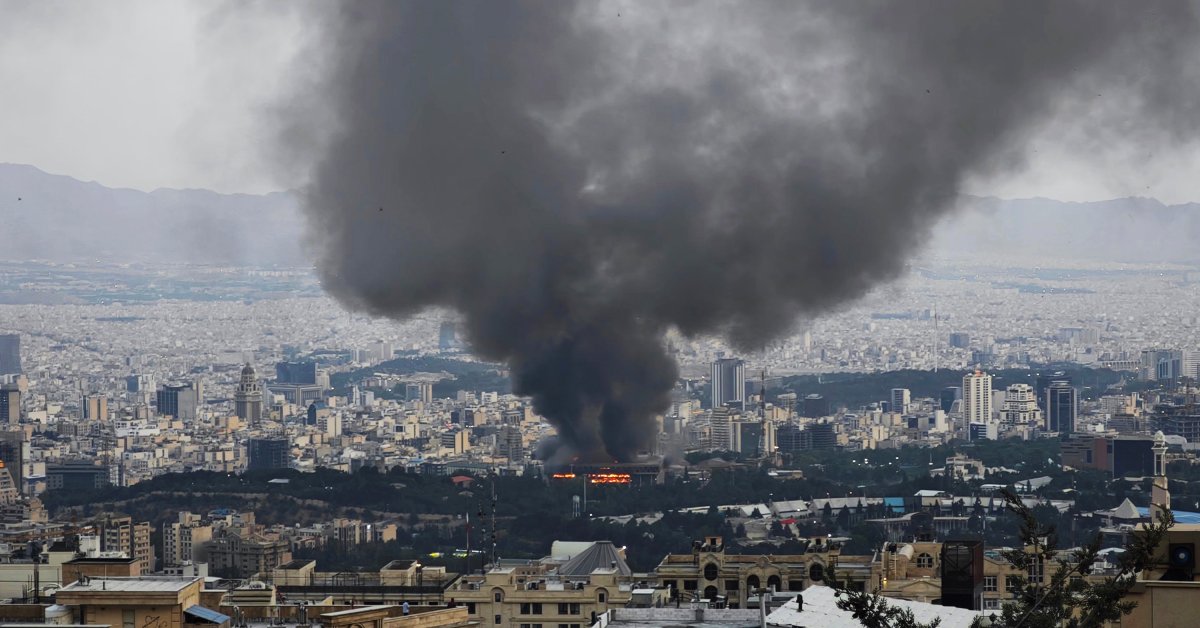The Brief June 17, 2025
Updates on the rise of political violence in the U.S., Israel and Iran, and more
Just four days into its ferocious air campaign, Israel appears to have gained a decisive edge in its escalating conflict with Iran: aerial supremacy over Iran.
The Israeli military said Monday that it can now fly over the country’s capital, Tehran, without facing major resistance after crippling Iran’s air defenses in recent strikes, enabling Israel to hit an expanding range of targets with relative ease.
Such control over Iran’s skies, military analysts say, is not just a tactical advantage—it’s a strategic turning point. Air supremacy gives Israel the freedom to escalate its bombing campaign, look for additional targets, and possibly redraw the rules of deterrence in a region where missile salvos and proxy wars have long defined the limits of conflict.
Soon after declaring control of Tehran’s skies, Israel warned residents and workers in the capital to evacuate, and later appeared to strike the headquarters of Iran’s state television broadcaster while anchors were live on air. It was a symbolically potent moment: a demonstration not just of reach, but of psychological dominance.
Israel’s aerial ascendancy is not free of risks. Backed into a corner, the Iranian regime may consider its survival at stake and could take more extreme measures. Iran has limited tools given the setbacks it has suffered over the last two years, but it still has terrorist proxies around the world and has attempted assassinations of major figures in the past. It might also try to sprint for a nuclear weapon in one of its remaining underground facilities.
The Israeli offensive—codenamed Operation Rising Lion—was launched Friday after the IAEA concluded that Iran had moved closer to the threshold of producing a nuclear weapon. Since then, Israel has carried out one of the most intense and far-reaching air operations in its history, targeting nuclear sites, missile launchers, airports, and senior figures in Iran’s Revolutionary Guard Corps.
Prime Minister Benjamin Netanyahu has said the strikes will continue until both Iran’s nuclear facilities and missile stockpiles are destroyed. U.S. President Donald Trump posted Monday night on Truth Social: “IRAN CAN NOT HAVE A NUCLEAR WEAPON… Everyone should immediately evacuate Tehran!”
Read more: Here Are the Top Iranian Generals and Scientists Targeted and Killed by Israeli Strikes—and What We Know About Them
But while the air campaign has given Israel the upper hand militarily, it has also hardened diplomatic dead-ends. Richard Nephew, the former Deputy Special Envoy for Iran under the Biden Administration, says that reviving nuclear negotiations with Iran is now “infinitely harder than it used to be” because the U.S. has shown it can withdraw from an agreement at any time and is unable to control its ally in Israel. “The idea of finding a sustainable, permanent deal here has taken a big hit as a result of Israeli military action,” he says, adding that Trump’s 2018 withdrawal from the original nuclear agreement was the catalyst for the current crisis. “We had a nuclear deal that was working. His own administration was saying it was working.”
Now, with Iran’s nuclear program damaged but not destroyed, and its retaliatory missile strikes continuing, military analysts say Israel may double down on the advantage its air superiority provides: more strikes, more decapitation efforts, and potentially even covert ground operations—backed by an air force that now roams Iranian skies largely unchallenged.
Here’s what to know about Israel’s air supremacy.
What does it mean to have air supremacy?
Air supremacy is the most complete form of aerial dominance a military can achieve. It means an air force can strike targets across a country at will, without major opposition from enemy aircraft or air defenses.
For Israel to claim this over Iran just days after the strikes began is an impressive military accomplishment, says Michael Knights, the Bernstein Senior Fellow at The Washington Institute who specializes in Middle Eastern security. “It’s exceptional to get this level of freedom. I’m quite surprised that they’ve managed it,” he says, noting that not even the U.S. had been able to establish air superiority over the Houthis despite spending around $1 billion on the effort, losing over 20 major drone systems in the process.
“Air superiority gives you a real edge when it comes to keeping the enemy stationary or watching whenever they try to move,” Knights says, suggesting that Israel may use it to track key targets like nuclear facilities or where certain Iranian leaders live. The air advantage also allows Israel to bomb “around the clock instead of just at night” without real fear of being shot down, he adds.
Read more: Israel Gets the War It Wanted
Israel began the war using its most advanced stealth aircraft, the F-35, enhanced with intelligence-gathering modifications to fly deep into Iranian territory and strike Iran’s air defense radar installations and surface-to-air missile batteries. After suppressing most of Iran’s air defenses, Israel sent older fighter jets, including F-15s and F-16s, to join the operation and began dropping JDAMs and SPICE bombs—relatively inexpensive compared to missiles—on an expanding list of military sites, some of them within the heart of Tehran.

Unlike Russia, which has failed to achieve similar air dominance in Ukraine after more than three years of war, Israel has accomplished it in a matter of days. Analysts credit superior training, tighter integration with intelligence and cyber operations, and the element of surprise.
“The two previous Israeli retaliatory operations in 2024 taught them that they could operate within Iranian airspace relatively freely,” Knights says. “First you take out its command and control, its communications, radar…and pretty soon you can operate drones in daylight over Tehran.”
How much damage can Israel do from the air?
With aerial supremacy, Israel’s destructive potential has increased exponentially. Without needing to rely on costly long-range missiles, Israeli jets can now fly directly over Iranian targets, drop cheaper precision bombs, and strike with greater frequency.
Knights says that the Israeli military will likely try to destroy the entire Iranian Navy and Iran’s weapon storage facilities, military and civilian fuel storage sites, and national security buildings. But he notes that Israel will not be able to strike some of Iran’s major uranium enrichment sites, like Fordow, a nuclear facility that is buried deep within a mountain and is considered nearly impervious to conventional airstrikes. “They don’t have bunker busters that are good enough,” he says.
Read more: Watch The Moment Israel Strikes Iranian State Television During Live Broadcast
Israeli officials have said its military has prepared at least two weeks of strikes, though that could change if the U.S. intervenes. The U.S. military has helped shoot down Iranian missiles fired at Israel.
“Iran has turned out to be much weaker than we had assumed, and yet it’s still standing,” says Alex Vatanka, a Senior Fellow at the Middle East Institute who specializes in Iranian security affairs. He adds that the Iranians know the U.S. is the only country that can stop Israel from attacking, and that Iran’s leaders are asking for talks to resume as long as the U.S. doesn’t join the attack. “Israel definitely cannot stay in this fight for the long haul without the U.S,” he says. “But Netanyahu is saying to Trump, please let me finish the job.”
“The Israelis were quite concerned about what kind of deal Donald Trump was going to make,” Nephew says. “That made them decide they needed to act now, as opposed to waiting to see what else would come from the negotiating process.”
Read more: How Involved Was the U.S. in Israel’s Attack on Iran?
Already, Israel has destroyed more than 120 surface-to-surface missile launchers—roughly a third of Iran’s total—along with two F-14 aircraft, dozens of command centers, and critical infrastructure supporting Iran’s nuclear and ballistic missile programs. The strike on Mashhad airport, 1,400 miles from Israel, was the longest-range attack in the campaign.
Iran is depleting its stockpiles of missiles and drones in repeated attempts to retaliate. Iran’s ambassador to the United Nations, Amir Saeid Iravani, said that more than 220 civilians in Iran have been killed since the start of Israel’s offensive, including 20 children, while more than 1,000 people have been injured. The Israeli prime minister’s office says that at least 24 people have been killed by Iran’s retaliatory strikes against Israel, and nearly 600 injured.








